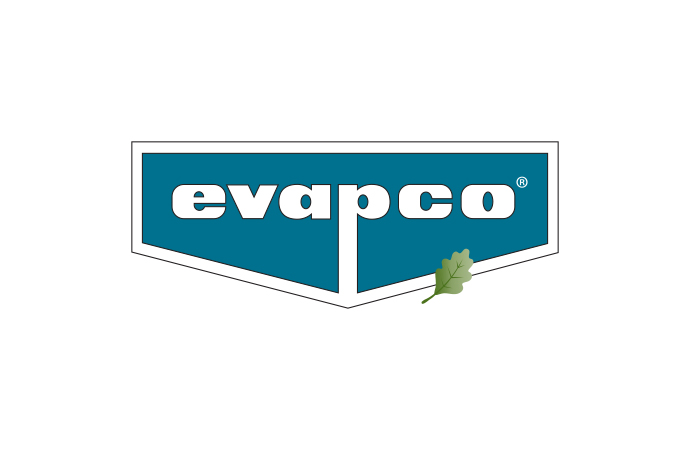French Institute INERIS is testing the behaviour of leaked ammonia in closed and ventilated machine rooms. It has collected data that can improve models predicting the consequences of accidental scenarios. At a next stage, together with industry it will assess the practical implications of preliminary findings on improving safety, through optimising the phenomenon of ammonia “trapping” in the presence of obstacles in the machine room.

Ammonia is widely used in industrial refrigeration systems and is to a lesser extent being used in air conditioning systems of high power. France is one of the countries in Europe where safety regulations pertaining to the use of ammonia remain fairly stringent. For example, when it comes to the use of ammonia in premises with access to the public, the use of ammonia is permitted only provided that it is used in an indirect system, the ammonia refrigeration system is located in a separate machinery room and the total amount of ammonia in a facility is no more than 150kg.
Developing a better understanding of the behaviour of discharges of ammonia gas or liquid in a closed and ventilated room where ammonia plants are typically located is crucial in enhancing the acceptability of ammonia.
In this vein, on behalf of the French Ministry for Ecology, the National Institute of Industrial Environment and Risks (INERIS) has been evaluating the consequences of an accidental release of ammonia, and in particular in the presence of many obstacles in the enclosed space (e.g. walls, pipes, equipment, etc) that can significantly affect the dispersion of ammonia.
Preliminary results confirm "trapping" of ammonia under certain conditions
An initial analysis of experimental results has shown that only two-phase discharges on obstacles may lead to "trapping" an important part of the ammonia discharge in the form of a “puddle” at the foot of the obstacle, a phenomenon that had previously been observed by INERIS when conducting experimental work on liquid ammonia under pressure.
Moreover, for the same leakage rate, the greater the obstacle is from the drain hole, the less the quantity of ammonia “trapped”. In test conditions, INERIS trapped three times more ammonia when a stainless metal sheet was placed closer to the opening from 1m to 50cm.
The type of obstacle also plays an important role: under the same conditions of release, the metal plate placed 1m from the opening led to the formation of a pool of about 1 kg, while when this was replaced by a concrete plate located at the same distance a puddle of one hundred grams of ammonia was formed. Therefore, the thermal behaviour characterisation of the obstacle is necessary in best predicting the mass of ammonia “trapped”.
Practical implication of findings to improve safety & next steps
INERIS assesses that these first observations would require further consideration jointly with the ammonia refrigeration industry in order to determine what practical application they could contribute in terms of safety.
For example, industry involvement could determine whether there would be interest in using metal siding in engine rooms to optimise the phenomenon of ammonia “trapping”, or in positioning pipes in such a way to increase the possible quantity of trapped ammonia in case of a pipe rupture.
In that light, new trials in which manufacturers are invited to participate are already planned by INERIS.
About the trial set up
In a test chamber of 80m3, the INERIS team simulated leaks of purely gaseous or two-phase ammonia, and carried out a total of twenty trials, varying each time several parameters:
Developing a better understanding of the behaviour of discharges of ammonia gas or liquid in a closed and ventilated room where ammonia plants are typically located is crucial in enhancing the acceptability of ammonia.
In this vein, on behalf of the French Ministry for Ecology, the National Institute of Industrial Environment and Risks (INERIS) has been evaluating the consequences of an accidental release of ammonia, and in particular in the presence of many obstacles in the enclosed space (e.g. walls, pipes, equipment, etc) that can significantly affect the dispersion of ammonia.
Preliminary results confirm "trapping" of ammonia under certain conditions
An initial analysis of experimental results has shown that only two-phase discharges on obstacles may lead to "trapping" an important part of the ammonia discharge in the form of a “puddle” at the foot of the obstacle, a phenomenon that had previously been observed by INERIS when conducting experimental work on liquid ammonia under pressure.
Moreover, for the same leakage rate, the greater the obstacle is from the drain hole, the less the quantity of ammonia “trapped”. In test conditions, INERIS trapped three times more ammonia when a stainless metal sheet was placed closer to the opening from 1m to 50cm.
The type of obstacle also plays an important role: under the same conditions of release, the metal plate placed 1m from the opening led to the formation of a pool of about 1 kg, while when this was replaced by a concrete plate located at the same distance a puddle of one hundred grams of ammonia was formed. Therefore, the thermal behaviour characterisation of the obstacle is necessary in best predicting the mass of ammonia “trapped”.
Practical implication of findings to improve safety & next steps
INERIS assesses that these first observations would require further consideration jointly with the ammonia refrigeration industry in order to determine what practical application they could contribute in terms of safety.
For example, industry involvement could determine whether there would be interest in using metal siding in engine rooms to optimise the phenomenon of ammonia “trapping”, or in positioning pipes in such a way to increase the possible quantity of trapped ammonia in case of a pipe rupture.
In that light, new trials in which manufacturers are invited to participate are already planned by INERIS.
About the trial set up
In a test chamber of 80m3, the INERIS team simulated leaks of purely gaseous or two-phase ammonia, and carried out a total of twenty trials, varying each time several parameters:
- The type of discharges (gaseous or two-phase)
- The nature of the obstacle (wall of concrete or stainless metal plate),
- The flow leak (tank pressure ranging from 5 to about 12 bar),
- The diameter of the discharge outlet (1 or 4 mm),
- The extraction rate of the air chamber (500 to 2000 m3/ hour),
- The distance between the discharge point and the obstacle (25 cm, 50 cm or 1 m for the metal plate, 1 m to the concrete wall)
MORE INFORMATION
Related stories














_1522327086.png)





